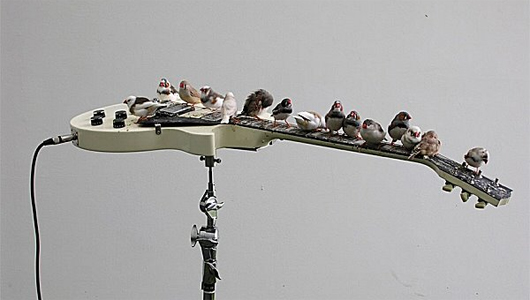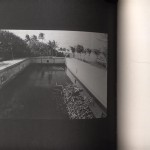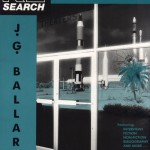Sound Art?
Tuesday, March 8th, 2011Sound Art?
From the early 1980s on there have been an increasing number of exhibitions at visual arts institutions that have focused on sound. By 1995 they had become almost an art fad. These exhibitions often include a subset (sometimes even all…) of the following: music, kinetic sculpture, instruments activated by the wind or played by the public, conceptual art, sound effects, recorded readings of prose or poetry, visual artworks which also make sound, paintings of musical instruments, musical automatons, film, video, technological demonstrations, acoustic re-enactments, interactive computer programs which produce sound, etc. In short, ‘Sound Art’ seems to be a category which can include anything which has or makes sound and even, in some cases, things which don’t. Sometimes these ‘Sound Art’ exhibitions do not make the mistake of including absolutely everything under the sun, but then most often what is selected is simply music or a diverse collection of musics with a new name. This is cowardly. When faced with musical conservatism at the beginning of the last century, the composer Edgard Varèse responded by proposing to broaden the definition of music to include all organized sound. John Cage went further and included silence. Now even in the aftermath of the timid ‘forever Mozart decades’ in music, our response surely cannot be to put our heads in the sand and call what is essentially new music something else – ‘Sound Art’. I think we need to question whether or not ‘Sound Art’ constitutes a new art form. The first question, perhaps, is why we think we need a new name for these things which we already have very good names for. Is it because their collection reveals a previously unremarked commonality? Let’s examine the term. It is made up of two words. The first is sound. If we look at the examples above, although most make or have sound of some sort, it is often not the most important part of what they are – almost every activity in the world has an aural component. The second word is art. The implication here is that they are not arts in the sense of crafts, but fine art. Clearly regardless of the individual worth of these various things, a number of them simply have little to do with art. It’s as if perfectly capable curators in the visual arts suddenly lose their equilibrium at the mention of the word sound. These same people who would all ridicule a new art form called, say, ‘Steel Art’ which was composed of steel sculpture combined with steel guitar music along with anything else with steel in it, somehow have no trouble at all swallowing ‘Sound Art’. In art, the medium is not often the message. If there is a valid reason for classifying and naming things in culture, certainly it is for the refinement of distinctions. Aesthetic experience lies in the area of fine distinctions, not the destruction of distinctions for promotion of activities with their least common denominator, in this case sound. Much of what has been called ‘Sound Art’ has not much to do with either sound or art. With our now unbounded means to shape sound, there are, of course, an infinite number of possibilities to cultivate the vast potential of this medium in ways which do go beyond the limits of music and, in fact, to develop new art forms. When this becomes a reality, though, we will have to invent new words for them. ‘Sound Art’ has been consumed.
Max Neuhaus, ‘Sound Art?’, in Volume: Bed of Sound (New York: P.S. 1, 2000) n.p.






















